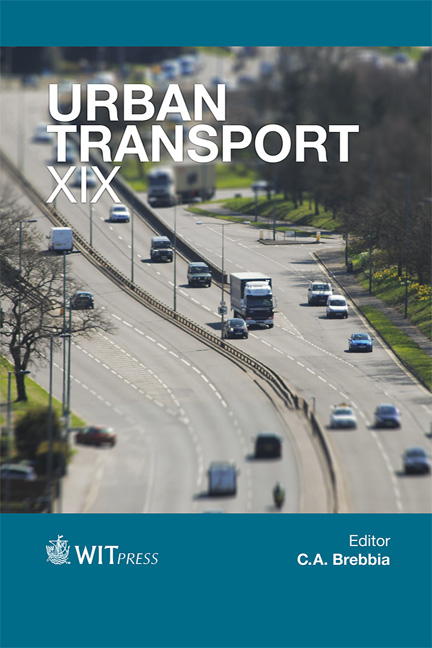Ordinal And Binary Logistic Logit Models For Examination Of Behavioral, Infrastructure And Perception Factors Influencing Biking
Price
Free (open access)
Transaction
Volume
130
Pages
12
Page Range
573 - 584
Published
2013
Size
316 kb
Paper DOI
10.2495/UT130461
Copyright
WIT Press
Author(s)
S. Basbas, V. Tetou & I. Politis
Abstract
In the context of this paper, two logistic regression logit models are developed in order to examine a number of parameters (behavioral, infrastructure and perceptional) that might have an effect on biking potential. Almost 200 bicyclists were interviewed at the city of Thessaloniki, Greece and two models were built; an ordinal logistic model measuring the frequency of biking and a binary logistic model estimating the possibility of perceiving the bicycle road of the city as attractive or not. The ordinal model, indicated that the bicyclist aged between 25–39 years old have less possibilities to stop biking. Additionally, from the odd ratio calculation it was found that people who state that are very well informed about the benefits of biking are more unlike by 65% to use seldom the bicycle road compare to those that state that are just enough informed. Finally, amongst other important outcomes, the binary model predicted that only 7% of those who say that the bike road is safe will not perceived the bicycle road as attractive; the respective proportion for those who say that bike road is not safe is 17%. Keywords: ordinal and binary logistic regression, biking, bicycle road attractiveness.
Keywords
Keywords: ordinal and binary logistic regression, biking, bicycle road attractiveness.





